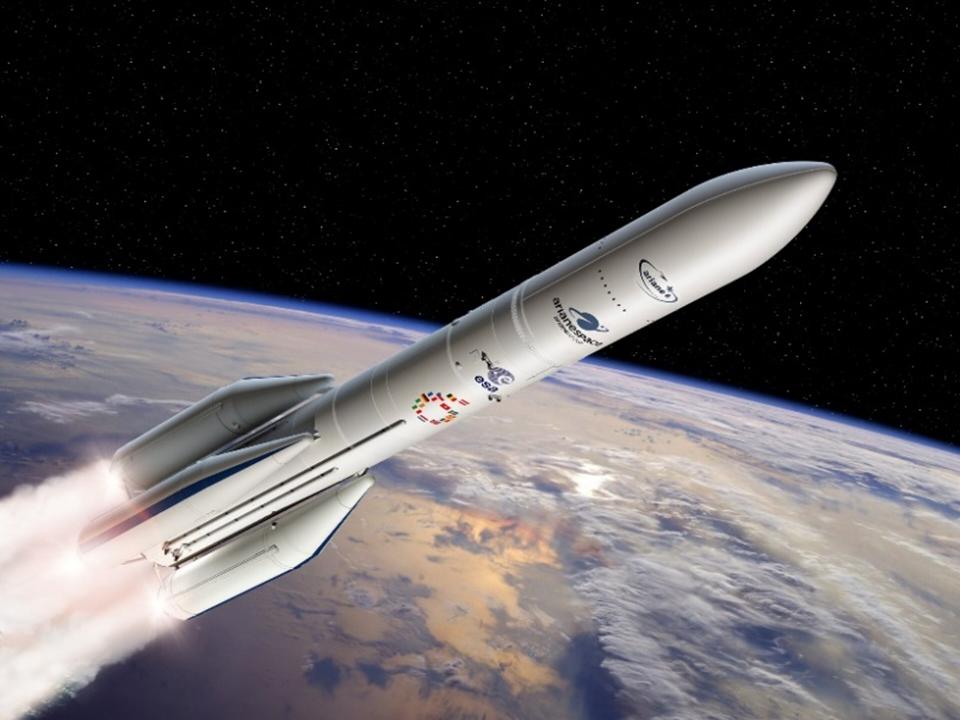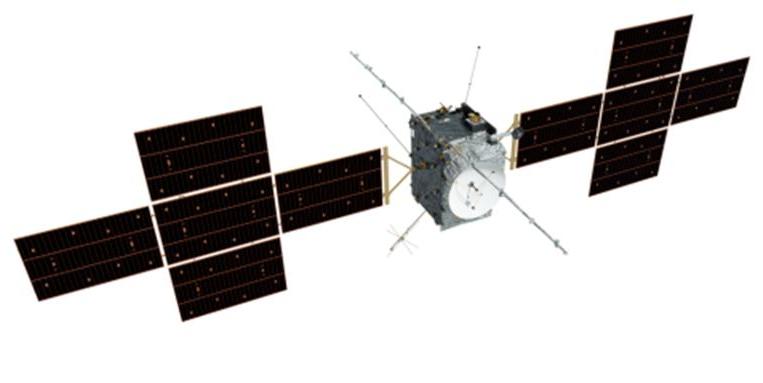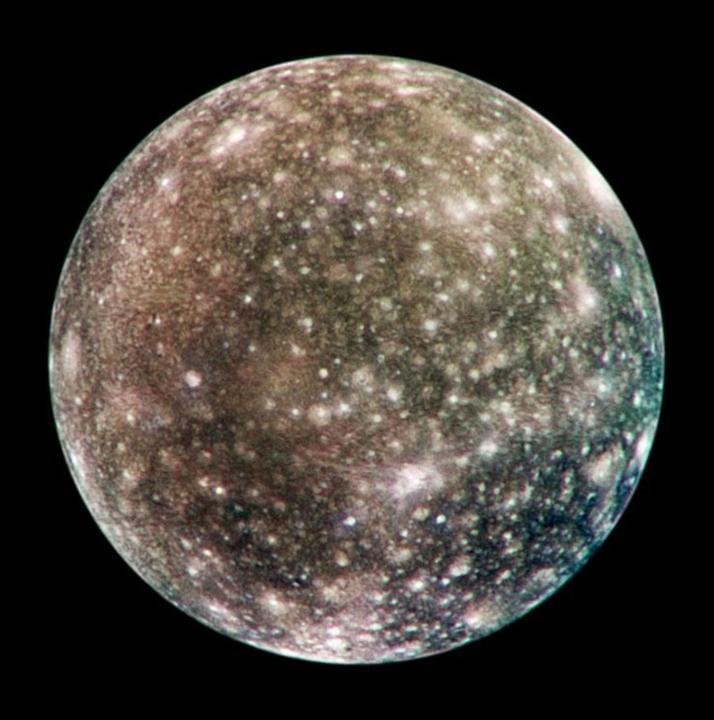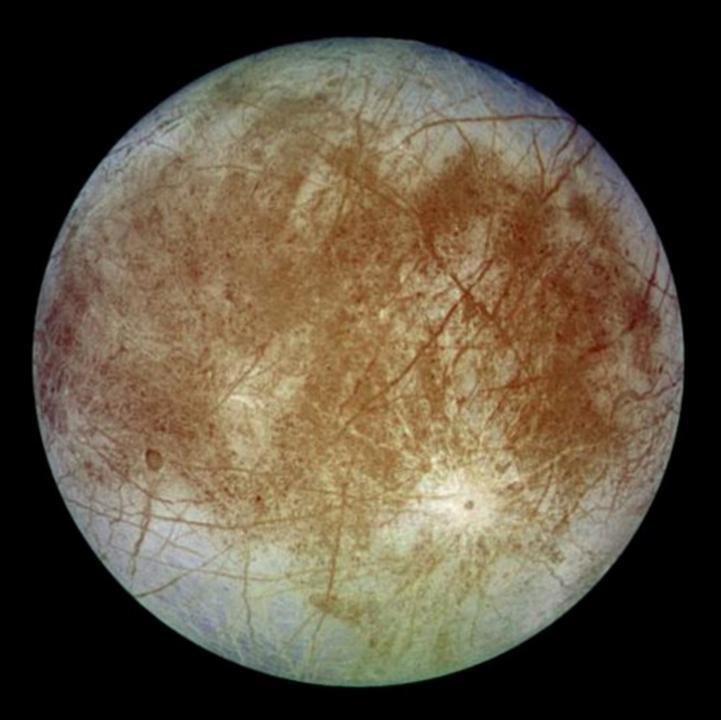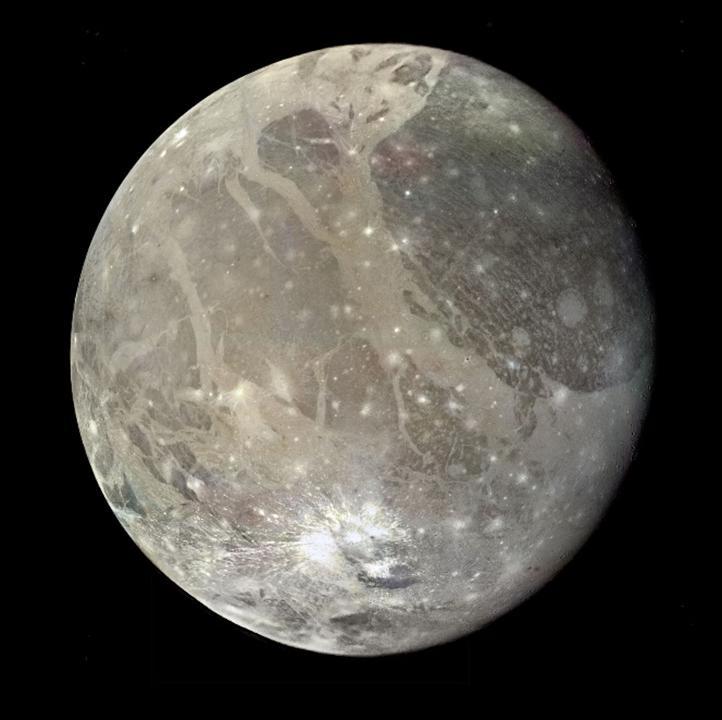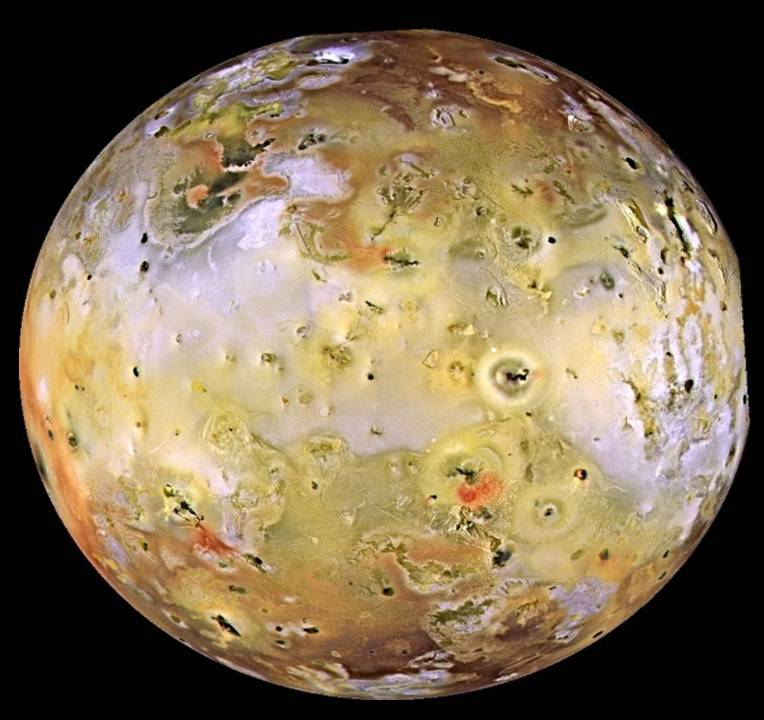Science
Jupiter and Icy Moons Explorer
(JUICE)
2022 will see ESA launch a mission
to explore Jupiter's moons. Ian Moss notes that
not all moons are the same…
Quick links to sections below:-
Introduction
Launch vehicle and trajectory
The long wait
The JUICE scientific instruments
Previous missions to the gas giants
Luna: our moon. The very name evokes a sense of mystery, beauty and romance. A beacon in the night that waxes, wanes and exercises unseen power over the ocean tides on Earth.
Close-up it is a cratered rock; mountainous, arid, lifeless and unchanging. In the 400 or so years since Galileo first saw the larger moons of Jupiter, we have discovered many further moons associated with other planets in our solar system. Until recent years, they were thought of as “just moons”, over-shadowed in our minds by their spectacular home planets. However, several missions* to the gas giants have shown us that the picture is more complex. The largest moons of Jupiter: Ganymede, Europa, Callisto and Io, are not simply rocky satellites of the planet but are worlds in their own right with complex geology, meteorology and perhaps, biology.
Since 2012 the European Space Agency (ESA) has been developing the Jupiter Icy Moons Explorer (JUICE). This craft will undertake, from orbit, an extensive survey of Jupiter and its three largest moons: Callisto, Europa and Ganymede. The scientific mission objectives include:
- Mainly for Ganymede and Callisto, investigation of the composition and properties of ocean layers and their icy crusts, as well as attempts to detect sub-surface water reservoirs.
- Study of Ganymede’s magnetic field and how it interacts with Jupiter’s magnetosphere.
- For Europa, the focus is on chemistry that is essential to life including analysis of the composition of non-water ice and measurement of the thickness of the icy crusts.
- A detailed study of Jupiter’s atmosphere; including its circulation, meteorology and chemistry. These studies may provide insight into how the planet affects the stability of the environment of the three moons over an extensive, geological time scale.
The broader implication of all these investigations is that the Jovian system may provide a model for habitable worlds that are satellites of gas-giant planets in other star systems.
Launch vehicle and probe craft trajectory
Launch is planned for mid-2022. The launch vehicle will be one of the redoubtable Ariane series taking off from French Guiana. The probe craft will be released into a trajectory which will provide five gravity assists from inner planets. One each from Mars and Venus and three from Earth. This phase will take about four years; the craft will then spend five years heading to the Jovian system. It will spend two and a half years carrying out its scientific mission before running out of fuel and crashing on the surface of Ganymede.
The JUICE craft carries its own motors and propellant to enable it to manoeuvre around Jupiter and the Galilean moons. Electrical power for the craft and the science instruments is provided by a solar panel array as shown above. Each panel is about 3.5 x 2.5 metres.
Overview of Jupiter and the Galilean moons
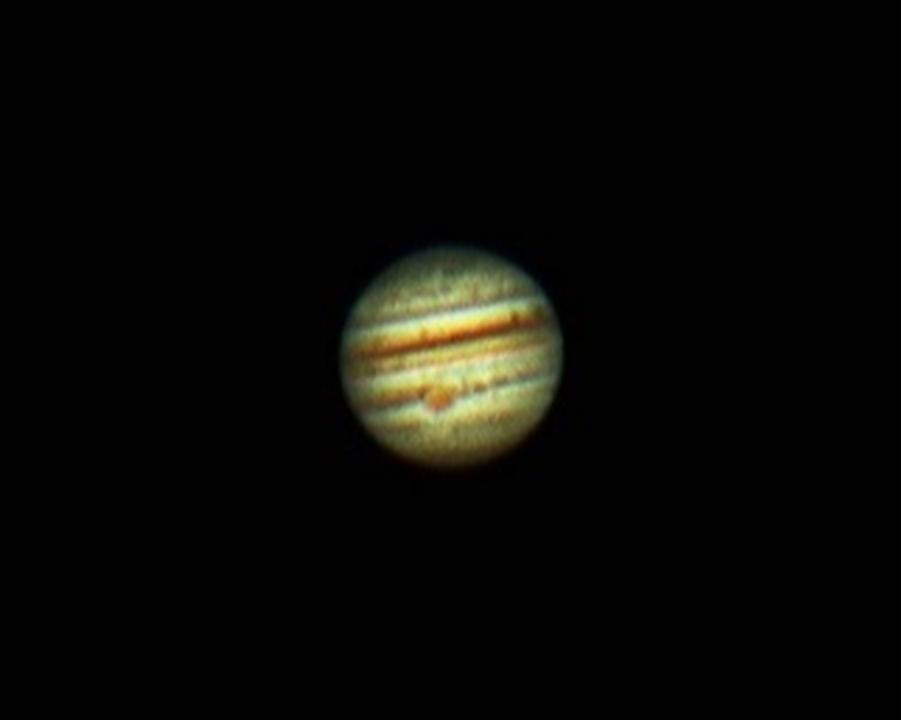 Jupiter imaged from London, August 2021 by the writer. © I. Moss, 2021.
|
Jupiter
More than twice the size of all the other planets in our solar system combined, Jupiter easily owns the title of gas giant. With a year length of more than 4000 days, Jupiter orbits the Sun at a range of about 800 billion kilometres. The familiar characteristic bands and spots can be seen, even with small telescopes on Earth, that are caused by swirling ammonia and water in an atmosphere largely composed of hydrogen and helium. The famous “great red spot” is a storm that has been raging for hundreds of years, though in recent times it appears to be getting smaller. The nature of Jupiter’s core is unclear at present but it seems likely that it is a dense mixture of elements surrounded by liquid hydrogen. Jupiter’s gravity and radiation profoundly affect its moons; analysis of data from the JUICE probe may provide further insight into these interactions.
|
Callisto
Europa
|
